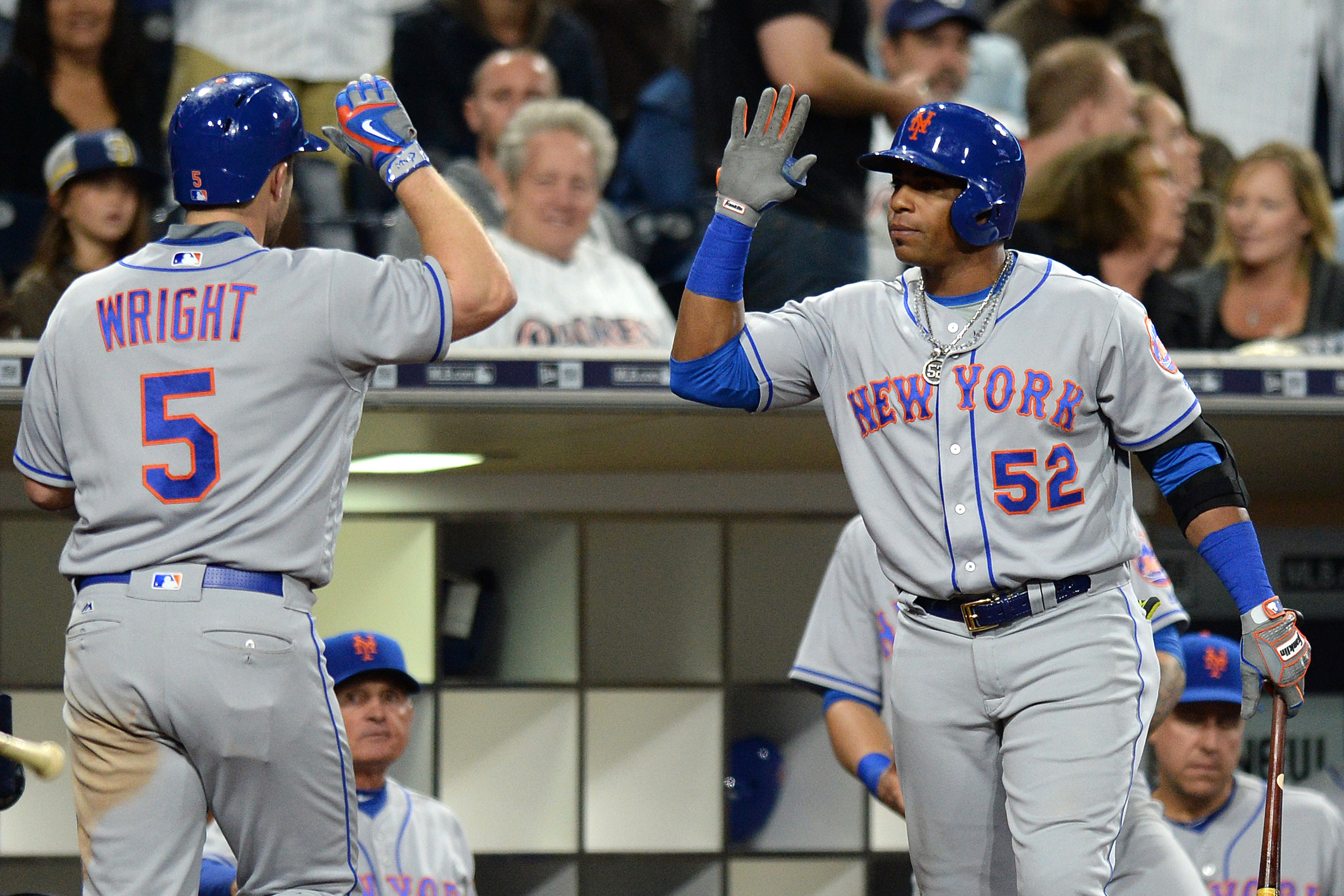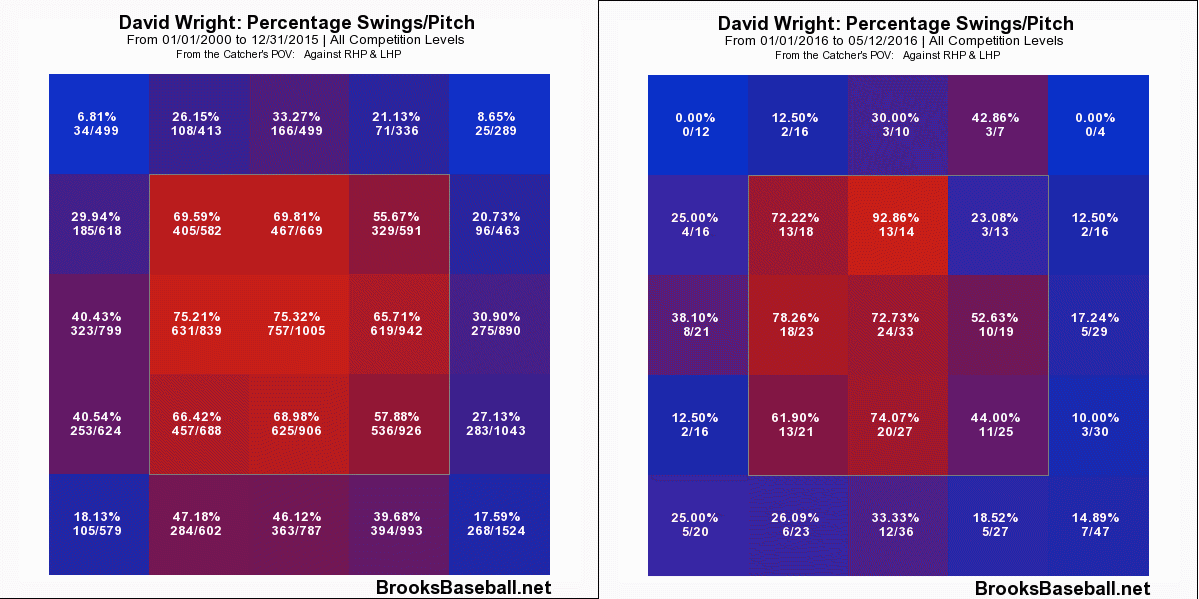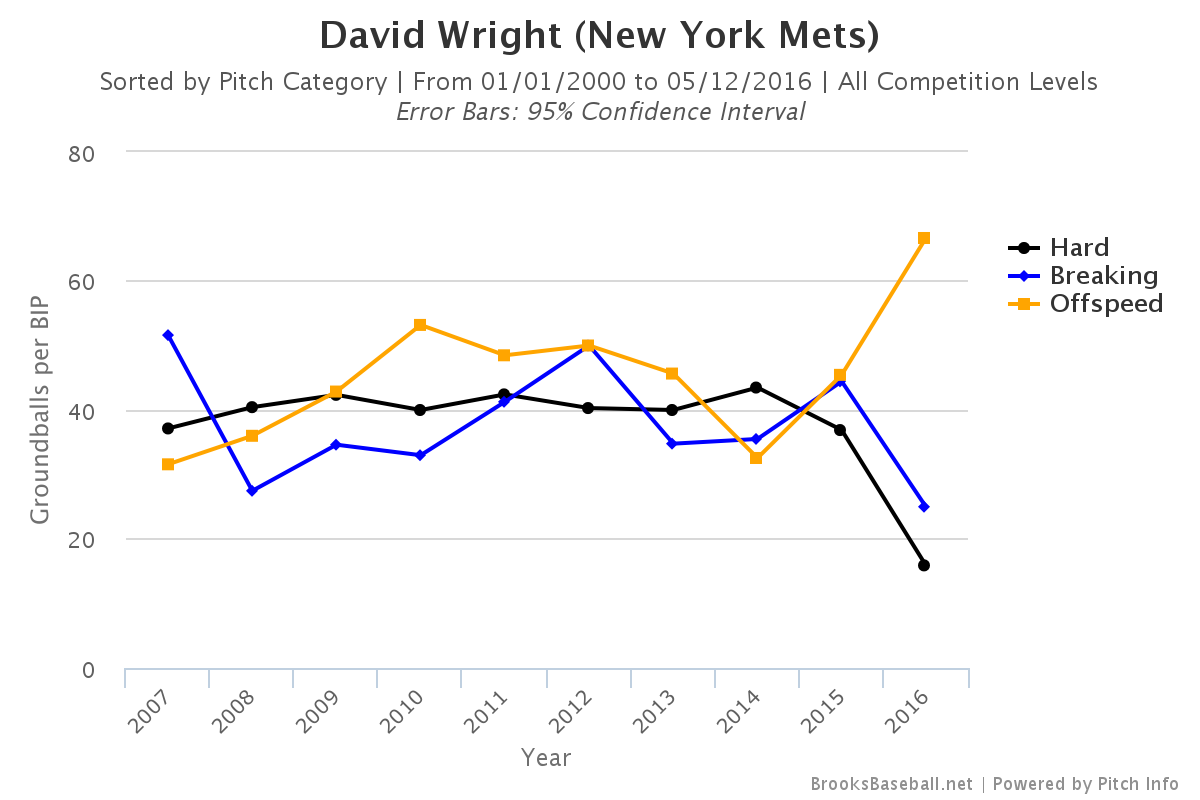Coming into 2016, I was worried about David Wright. I’ve been worried about David Wright for ages, but this time my worry was a bit more specific. Entering his age-33 season, Wright is due to deal with spinal stenosis over the course of a full season. Though his performance in 2015 was good when he played, the question remains: can he continue to be a solid performer on a Mets team that needs every extra run in order to return to the World Series? When he can play, can he play?
So far? So good. The first concern to address is whether or not Wright could shoulder the load of regular playing time, and up to this point, things have been going great. Over the team’s first 33 games, Wright has started all but seven, which is pretty ideal. Wilmer Flores and Eric Campbell have filled in when he’s been out, but at this rate he could probably play 120-130 regular-season games this season, barring another setback of some sort. If he can take the field–and do so perhaps 70-80 percent of the time–could that come at the expense of overall performance? Can he still be a star?
When Wright was at his apex, he was the type of hitter every GM dreamed of; he possessed impressive hit and power tools, paired with a solid offensive approach. In 2016 David Wright isn’t that player any more. The power and patience are still there, but his hit tool seems to be diminished–or at least that’s the story that his numbers are telling. Instead of being the well-rounded hitting savant that he was back in 2007 or 2012, today’s David Wright is a bit more of an all-or-nothing slugger. And, judging from the numbers, I think that David Wright is selling out for power a little bit.
When we take a quick look at Wright’s big-ticket rate stats–his batting average, on-base percentage, and slugging percentage–only one number seems different from his career norms: batting average. That stat has dipped down to .240, as compared to his career mark of .297. And yet, his True Average–the holistic measure of how good his offense is–is the third-best of his career: .325. Despite this cratering batting average, Wright is as good (compared to the league) as he’s ever been.
Here’s what has happened so far: Wright’s walk rate and strikeout rate have leapt up from both last year and his career numbers. For his career, Wright has an 18.7 percent strikeout rate and an 11.1 percent walk rate–numbers that aren’t too different from, say, Miguel Cabrera–a hitter with elite power and an elite hit tool to pair with it. This year? Wright is at a 30.7 percent strikeout rate and a 19.8 percent walk rate–in practice, he’s walking more than he used to strike out, and striking out almost twice as he normally had. We’re talking late-career Adam Dunn numbers here.
When David Wright swings this season, he tends to miss. That’s where the strikeouts are coming from. His contact rate has dropped precipitously; his career contact rate was a healthy and consistent 79 percent, but in 2016 he’s only making contact 62 percent of the time. And his swinging strike rate has almost doubled from 21 percent over his career to 37 percent this season.
As a result–or perhaps just as part of a new strategy–Wright is swinging less frequently, particularly at balls out of the zone. By BP’s metrics, Wright is swinging at balls out of the zone just 19 percent of the time, compared to his career mark of 26 percent. In essence, it appears he’s adapting to his diminished ability to make contact by increasing his selectivity. Just compare these two heatmaps:
On the left, you can see Wright’s old swing zone; on the right you can see his zone from this season. There’s an obvious change in selectivity, especially against balls low and outside.
The result is this change in approach he’s trading singles for walks … and his extra-base hits are slightly on the rise from last season. When he does make contact, he’s hitting the ball hard. Though he only has four homers on the season, Wright already has seven doubles. 11 extra base hits are just one fewer than last season (seven doubles and five homers), and it’s taken him 53 fewer plate appearances to gather them up. According to MLB’s Statcast data, the average exit velocity on the Captain’s balls in play is 94.4 miles per hour–that’s good for 13th place among all of MLB. He’s hitting the ball very, very hard, and that hard contact is in the air. Look at how his ground ball rates have dipped this year from years previous:
He’s beating offspeed stuff into the dirt, but the pitches he puts in play more often–fastballs and breaking pitches–less than a quarter of the time. Hard-hit balls on the ground are singles and outs. Hard-hit balls in the air are doubles, homers, and fewer outs.
Wright may not be a contact hitter anymore. This is absolutely fine. Sure, sometimes you’d prefer a hitter who puts the ball in play and “makes things happen”–as we’ve learned from the Royals’ contact-heavy run of success, that can lead to positive events for your team in the clutch. But it’s possible that’s just not Wright’s game these days.
Adaptation. Evolution. Necessity is the mother of invention. Between the age and the injuries, David Wright needed to change his game in order to maintain status as a star player. Against the odds, he’s done that–so far. Things could change. He actually has a pretty high BABIP (.345) right now for a guy who’s avoiding putting the ball on the ground. He needs both of those two things to continue in order to keep racking up doubles. He needs to keep hitting the ball very hard on those rare occasions when he connects, in order to keep pitchers fearful of making a mistake, and therefore avoiding the zone.
But the best case scenario is here. Not only is David Wright playing with relative frequency, he’s playing well, and he’s demonstrating the ability to change his game to adapt to his situation. It’s these adjustments that tend to separate the best players in baseball from the guys who wash out–you see it in Mike Trout attacking high fastballs and Bryce Harper learning to be selective. In case you might have forgotten, Wright used to be a superstar too, complete with the skills and baseball acumen to match. He may not be the same guy he used to be, but he’s still pretty darn good.
Photo Credit: Jake Roth-USA TODAY Sports


